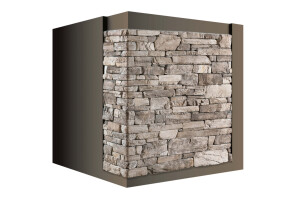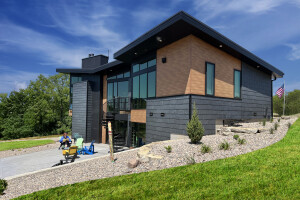Slate is mainly a metamorphic rock, formed from loam deposits.
Slate consists of a long series of minerals – quartz, sericite, calcite, chlorite, talc, rutile and andalusite – and – to a lesser degree- sillimanite, all as a sharpening of erosion as a result of erosion continents, in the depths of the oceans sunk to unbelievably large thicknesses of 10,000 meters and more in thick layers, under the generation of great heat, compressed and compacted.
Under the influence of high pressures and the large shear forces that prevail in our earth’s crust, the stratification arises and a more or less strong crystallisation and tooting of minerals. All these factors, like the composition of the raw materials, pressure and age of the layers, determine the quality of the slates.
Due to corrugation of the earth’s crust the slate layers often came to lie at an angle and caves were formed. Nature thus made, as it were, the first slate roofs. They were therefore not invented by humans but discovered by them. It is precisely the folding and the piling up the layer complexes which, on the one hand, causes difficult technical problems for the mining of the roof, but on the other hand the pressure stratification in the original clay rock has arisen, as a results of which this has got that typical leafy structure which makes the slate cleave.



















